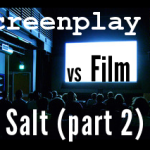Quick scenario.
Blessed by the gods, you have been struck by a burst of inspiration.
It’s going to produce an AMAZING story.
You just know it.
So, you sit down and outline your story in advance or immediately leap into a rough draft. Whatever floats your boat.
Then, when you’re done, you give it a little look-see, and well…your story didn’t turn out quite the way you expected.
That’s because writing is a messy business.
Ideas beget ideas.
One set of ideas leads you to a new set, which in turn, leads you to another set of alternatives.
The further you go along, the more your story goes off track, straying from the path you intended to follow.
This isn’t necessarily a bad thing. Maybe, over the course of plotting or writing, you stumbled across a superior way to develop your original idea.
Then again, maybe you didn’t.
Maybe you’re better off sticking to your original idea. It could really dazzle audiences—as long as you don’t lose sight of it.
It could go either way. It doesn’t matter (for the intents and purposes of this writing article).
Point is, you can’t let things remain the way they are.
You can’t let your outline or rough draft continue to suffer from an identity crisis.
What do I mean by identity crisis?
Here’s a quick example:
- You introduced your protagonist (let’s call him John) to readers.
- You got readers to fall in love with John (even though he’s not likable).
- But then, sidelined by his younger brother (let’s call him Jimmy), John disappeared from the plot.
In effect, you’ve bundled together two different stories (with two separate identities) within a single screenplay or novel: one story stars John, the other stars Jimmy.
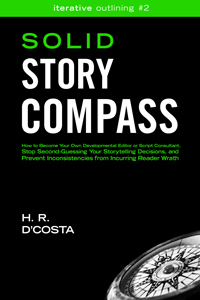
This is likely to occur when you empathize more with one character…but feel more excited about writing about another. I discuss this in more depth in my writing guide Solid Story Compass (details at the end of this article).
Oftentimes, when you examine your story and sense something’s wrong, but you can’t pinpoint what it is, you’ve spotted an incongruity like this one.
In your head, John’s clearly the protagonist. However, on the page, he and Jimmy are vying for dominance.
Basically, there’s a gap (okay, in some cases, it’s more like a chasm) between the version of your story that’s in your head…and the version that you’ve actually penned to paper.
Consequently, you’ll be promising audiences one thing (what you intended your story to be like), only to deliver another (how your story turned out, in reality).
This is not a pleasant surprise, the way plot twists and big reveals generally are.
This is a betrayal of audience expectations.
And this betrayal doesn’t bode well…
After the jump, I’ll share a specific example (plus the editing secret that John Grisham and Danielle Steel apparently use to keep their readers happy). So stay with me and scroll down!
ARE YOU ON PINTEREST? Save the image below to one of your boards on Writing, Plotting, or Editing. (When you hover over the image, a Pinterest save button will appear in the top-left corner. Click on that to save to Pinterest.)
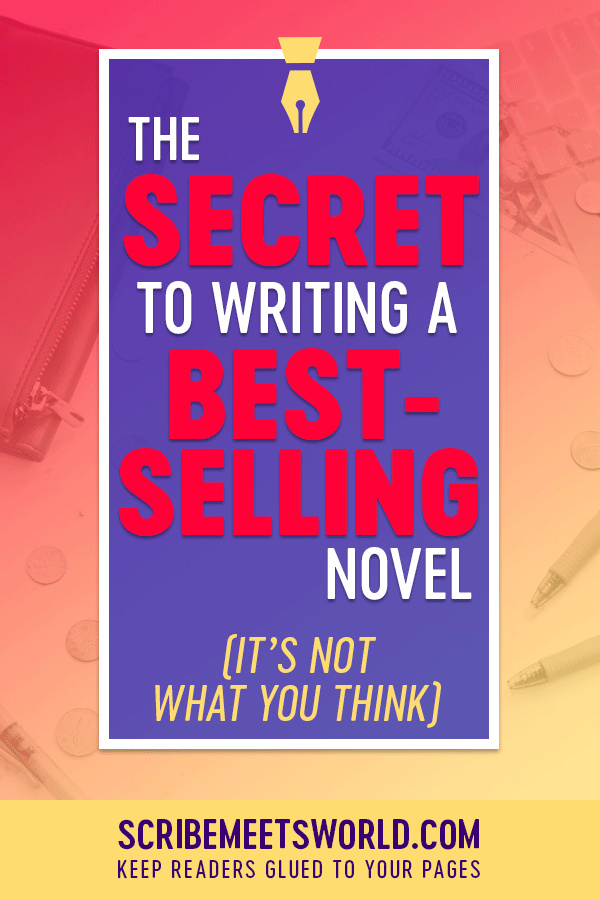
This article explains one of the editing secrets behind John Grisham’s and Danielle Steel’s bestselling novels
A Story with This Editing Problem Invites Reader Wrath—Not Bestseller Status
Depending on how much audience members were looking forward to whatever it is you promised (John as the protagonist, etc.), they are going to walk away from your story feeling anything from minor disgruntlement to major wrath.
Note: Choosing the wrong resolution for your story will also invoke reader wrath. To learn how to pick the perfect ending for your novel, read this.
Anyway, let’s return to the identity-crisis issue…
To show you what I mean, let’s look at an anecdotal example. (By the way, it’s from a novel, but the principle behind it applies to screenplays as well.) Somehow, while browsing Amazon.com, I stumbled across this young adult (YA) novel, Marie Antoinette, Serial Killer.
Okay. Let’s reflect on that title for a second.
It’s great.
It combines two popular items (Marie Antoinette, serial killers) in an unexpected way, yielding one irresistible hook.
Then there is the cover.
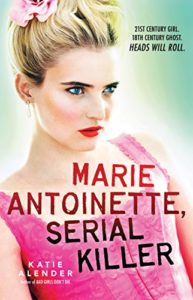
Striking, yes?
Many readers would be sold right there. But if they weren’t, the book description would surely get them. Here’s an excerpt:
Heads will roll!
Paris, France: a city of fashion, chocolate croissants, and cute boys. Colette Iselin is thrilled to be there for the first time, on her spring break class trip.
But a series of gruesome murders are taking place around the city, putting everyone on edge. And as she tours the sights, Colette keeps seeing a strange vision: a pale woman in a ball gown and powdered wig, who looks like Marie Antoinette.
…the murder victims are all descendants of people who ultimately brought about Marie Antoinette’s beheading. The queen’s ghost has been awakened, and now she’s wreaking her bloodthirsty revenge.
And Colette may just be one of those descendants…which means she might not make it out of this trip alive.
Title, cover, book description—it’s a killer package (pun intended) that has blockbuster potential written all over it.
Moreover, it’s a killer package that gives readers certain expectations. Most expect it to be a paranormal thriller that will creep them out or scare them (in the good way).
But that isn’t what readers get.
Instead of a spine-tingling, ghost-filled thriller, they get more of a coming-of-age tale set against the backdrop of Paris.
Apparently, the heroine was domineered by both her snobby friends and her desire to be popular…but she changes into a better person by the end of her 10-day vacation. (To be clear, I haven’t read the book. This was how the plot was described in multiple reviews.)
The whole coming-of-age thing? It’s not a bad story. There’s definitely a market for it (especially since it’s set in Paris—which, like Scotland—is reader catnip).
But that’s not what the title, cover, and description promised, is it?
No, it’s not.
As a result, readers didn’t get the story they wanted—what they expected. They got a blend of (at least) two different stories, bundled together in one killer package.
They got a story with an identity crisis.
In the words of Amazon reviewer KRLGA (who gave the book a two-star review):
It seemed like the book was really a growing up/coming of age story about a girl trying to understand who she is and who she wants to be. And if that was the route the book wanted that was fine, but the serial killer stuff should have been left out. I think it could have been a good coming of age story without the murders, or it could have been a good murder story. But the two of them together was kind of a letdown. It felt like it went in 2 different story lines that would randomly merge together with no real reason. I did not hate the story, it just did not live up to my expectations.
KJ was kinder, docking only two stars instead of three. Yet, her review echoes the same complaint:
It’s fun to follow Colette while she figures out who’s behind the murders and why certain people are being murdered. Had the book focused solely on that instead of it feeling like a background storyline to the petty teen drama, this would have been a 5 star book.
To be fair to the author of Marie Antoinette, some readers weren’t bothered by the mish-mash of genre and plot. They thought the novel hit the right balance. Or, while they didn’t think the novel hit the right balance, they didn’t mind because this was offset by the Parisian setting.
However, the complaint that the novel wasn’t as creepy as expected (and that the coming-of-age angle took over the plot) was made repeatedly on Amazon.
It’s one reason why both KJ and KRLGA gave the novel less than five stars.
Because the novel tried to be too many things, it failed to satisfy these readers’ expectations. This happens all too frequently with stories that have an identity crisis.
That’s because readers like to see you take your idea (whatever it is you promised them) as far as it can go.
They prefer depth to breadth.
They’re enthralled by cohesion.
That’s why you can do so many things well—
- start your story in the right place
- raise the stakes
- craft the perfect “all is lost” moment
- end with a nail-biter climax
—and yet, write a novel that’s fundamentally flawed.
Without cohesion to go along with these other virtues, your book won’t be en route to becoming a bestseller. Instead, it’s apt to become a ripe target for star docking.
Still not convinced?
With the help of Jodie Archer and Matthew Jockers, I now have algorithmic data to back me up…
But…A Story Without an Identity Crisis Could Become a Blockbuster (Here’s Proof)
A little background info is in order:
Two researchers, Jodie Archer and Matthew Jockers, applied the concept of data mining to writing a bestselling novel. As I understand it, this is what they did:
First, they fed the text of 5,000 novels into a computer. Then, they told the computer which books were bestsellers. (Five hundred of them were; the rest were not.)
Basically, Archer and Jockers trained a computer to recognize the textual patterns of a bestseller. The results of this endeavor (published in their book, The Bestseller Code) are very interesting.
To quote the sample chapter I read:
It turns out that successful authors consistently give that sweet spot of 30 percent to just one or two topics, whereas non-bestselling writers try to squeeze in more ideas…While this may sound like a lot of numbers, the effect on your reading experience and the cohesion of a satisfying narrative is quite significant.
Archer and Jockers’s results become even more interesting when you consider the following: they asked the computer to identify the authors (from the past 30 years) who have the best grasp of storytelling (i.e. who would be most likely to develop a concept into a bestselling novel).
Without knowing the sales history of any of the authors, the computer chose two: John Grisham and Danielle Steel—both of whom, as we all know, dominate the bestseller lists year after year.
Moreover, Grisham and Steel actually deviate from other bestselling authors in a major way. They don’t allocate that 30% sweet spot to one or two topics.
Grisham and Steel allocate that 30% sweet spot to ONE topic only.
In other words, according to the computer (which has been fed a lot of data), a bestselling book has a clear and cohesive identity, as defined by 30% of its content.
Non-bestsellers, on the other hand, do not.
At this point, you might be thinking that 30% isn’t a lot. How can it dictate the odds of success? How can it be the hallmark of a bestseller? What about the remaining two-thirds (or so)?
Interestingly, with respect to topic, the remaining two-thirds is subdivided into very tiny proportions.
We’re talking in the range of 2%–4%.
Although they collectively add up to a large number, these proportions are, individually, too small to define the overall identity of a novel. Their contributions are overshadowed by that 30%.
Note: Although this research was conducted using novels, the principle behind it (if not the same numerical ratio) should apply to screenplays as well.
If you want to write a breakout hit, you should first focus on that core 30%…
…which brings me to the issue of idea vs. execution.
A blockbuster story idea doesn’t automatically equate to blockbuster success. To be successful, an idea has to be executed properly.
3 Editing Fails That Prevent Your Book from Becoming a Bestseller
If we extrapolate from Archer and Jockers’s results, the blockbuster potential of your story will be significantly reduced under the following circumstances:
- You fail to cross that 30% threshold. Your story is about too many things. It doesn’t have a core essence; it doesn’t have a clear identity.
- You cross the 30% threshold, but the remaining two-thirds of your novel isn’t subdivided into tiny proportions. Instead of taking up 4% of your novel (as is the case in a typical bestseller), one topic takes up 20% or more, rivaling the 30% sweet spot.
- You cross the 30% threshold—but critically—this is not what audiences expect the 30% will be about. (In contrast to the other two circumstances, this one is more of a marketing problem than a content problem.)
Here’s the thing: stories that suffer from an identity crisis are, in all probability, going to fall under one of these three circumstances.
That’s because they begin as one thing (what you intended your story to be like) and end as another (how your story turned out, in reality).
With respect to content, stories with an identity crisis are all over the place.
Consequently, they’re unlikely to cross the 30% threshold. Or, if they do, the effect of the 30% threshold gets diluted by rival content or misguided marketing.
To increase the odds of writing a bestseller that becomes massively successful, you’ll have to fix that.
The question then becomes, how?
The Preliminary Step to Writing a Bestselling Novel
If you made it this far, you know that bestselling novels are focused. They aren’t about many different things.
Bestselling novels are about one thing in particular.
That’s why, if you want to write a bestselling novel, you should borrow a technique from screenwriters and summarize your story in one sentence (known as a logline).
Why is this valuable? It’s a great litmus test to determine whether you have too much going on.
If you can’t describe your story in one sentence, then you know your idea probably isn’t focused enough. It needs to be whittled down; it needs to be corralled into shape. (There are exceptions, but for the most part, this holds true.)
Below are some resources for writing loglines:
- Building the Perfect Logline for Your Book, Screenplay, or Other Story
- The 6 Most Common Logline Weaknesses
- 10 Tips for Writing Loglines
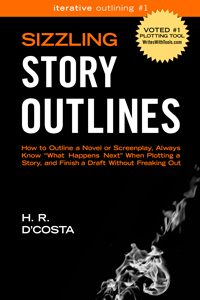
You can also find a logline template in chapter 7 of my writing guide Sizzling Story Outlines.
Even better, Sizzling Story Outlines will teach you how to use your logline to crack your story’s structure. By knowing your structural turning points in advance, you’ll have signposts to guide you as you write—and you’ll be less likely to get stuck in the middle of your draft. Plus, strong story structure creates a roller-coaster ride that keeps readers hooked to your pages.
Okay, back to loglines.
A logline is a good place to start to achieve a rudimentary level of focus within your plot. However, even when your logline forces you to trim your premise to its bare bones, your story can still go off the rails when you sit down to write.
That’s because (as previously mentioned) writing is a messy business. As a result, your draft may veer off course multiple times…
…which means—even with a logline—your story might not have the requisite level of cohesion necessary to become a bestseller.
So…How Do You Fix a Story That’s All Over the Place (And Hopefully Become a Bestseller)?
To quickly recap, in order to acquire rave reviews and bestseller status, you need to provide audiences (a) what they’re looking for, in (b) sufficient quantities to satisfy them.
Stories that suffer from an identity crisis usually fail to do this…which means that, to achieve the results you want, you need to whip your draft into shape.
Hiring someone like a developmental editor or script consultant to do it for you—that’s probably the easiest way.
Talented editors and consultants don’t just read through your story and flag miscellaneous problems that catch their eye. Looking beyond the level of a scene or a sentence, they take a huge step backward.
With cool objectivity, they assess the big picture and keep tabs on the broad strokes of your story, how it flows overall.
They can eloquently explain what’s wrong, what’s weak, and what’s not working—and dish out the fixes. They can help your story achieve its full potential and cross that 30% threshold we just talked about.
But you have to find someone whose sensibility matches your own and whose schedule fits with yours. Plus, developmental editors and script consultants aren’t cheap.
They can cost anywhere from hundreds to thousands of dollars. It’s a fair price to pay for their hard-won wisdom. Even so, it may take you awhile to save up enough cash to hire your dream editor or consultant.
Is There a Way to Write a Bestseller…Without Paying a Developmental Editor or Script Consultant Thousands of Dollars?
I think so.
Until you find your dream editor or consultant—whose sensibility, availability, and affordability are well suited to your needs—what can you do?
You can’t send your story out into the world the way it is, not when it’s one hot mess. Not when it’s a mass of inconsistency that’s sure to trigger negative reviews or brutal coverage.
Nope. That’s not going to cut it.
Until you find your perfect editorial match, you must become your own developmental editor or script consultant.
It’s not easy, that’s for sure. However, it’s by no means impossible.
You can train yourself to take a bigger step back than you’re accustomed to, and view your story with the objectivity a big-picture assessment requires.
You can flag the incongruities a developmental editor or script consultant would spot.
Moreover, you can fix them: pruning what doesn’t belong and accentuating what does so that your plot flows as smoothly as orange-blossom honey.
How?
By constructing your very own story compass, and determining exactly what kind of story you’re telling (which, again, might not be the story you intended to tell).
What’s a story compass, anyway? Glad you asked…
Your Story Compass: A Less Costly Alternative to a Developmental Edit or Script Consult
Like a good developmental editor or script consultant, your story compass will keep you (and your story) on track.
It will help you get your bearings, when you need to decide what belongs in your story—and what doesn’t. It will help ensure your story remains focused (which remember, is the hallmark of a bestseller).
It will help you identify—and maintain—your story’s core essence, so that no one can accuse your story of suffering from an identity crisis.
However, unlike developmental edits or a script consult, your story compass won’t cost thousands of dollars. Furthermore, unlike a map compass, there is no true north.
That’s because each point of your story compass (there are five in total) is user defined. They’ll vary from writer to writer, and from project to project.
Essentially, they’re how you define the following:
- plot
- protagonist
- genre
- tone
- theme
By breaking down “the big picture” into five specific areas, your compass makes it easier to evaluate your story and identify what’s wrong with it. With your completed compass in hand, you’ll spot incongruities quickly.
You won’t just have a vague feeling of unease; you’ll be able to pinpoint—and fix—the source of trouble.
For instance, without your story compass, you might sense that something’s off about your climax. With your compass, you’ll know that the behavior of the villain’s henchmen is the problem. You need to change their behavior since it currently messes up your story’s tone.
Should a scene be kept in? Should it be deleted?
Your story compass can help you answer these questions, too. No need to second-guess your decisions. No matter how inventive or well written, if a scene doesn’t adhere to your compass points, it’s irrelevant. It must be deemed junk. It must be cut (or reworked).
Defining each of your compass points may seem simple (e.g. compass point #1, plot, should be whatever plot you intended to write). But because ideas beget ideas—and the content of your story might not match your intentions—constructing your compass isn’t as straightforward as it initially might appear.
Happily, my writing guide Solid Story Compass will show you exactly what to do. Not only that, each chapter (where appropriate) ends with simple action steps that, together, form a practical, systematic way to (a) ensure your story has the focused plot of a bestseller and (b) improve your draft just like a developmental editor or script consultant would.
Here’s a brief sampling of what you will accomplish by following these steps:
- You’ll smooth out your plot and avoid comments like, “it was all over the place” or “it unraveled quickly.”
- You’ll answer 2 questions to verify that backstory hasn’t taken over the main narrative.
- You’ll ensure that audiences invest in your hero—instead of in another character (which, sadly, not only happens more than it should…but also causes readers to dock stars from their reviews).
- You’ll maximize genre’s ability to be your personal rainmaker.
- You’ll successfully incorporate romantic subplots into your story so that they won’t alienate audiences (who, in this case, didn’t sign up for a romance).
- You’ll confidently tackle 5 kinds of tonal inconsistencies—and take measures to prevent outside influences from tampering with your story’s tone…undoing all your hard work.
- You’ll use 6 tools to extract potential themes from your story; after which, you’ll polish one of them until it shines.
Ultimately, by following the steps in Solid Story Compass, you’ll bridge the gap between the story in your head and the story you actually wrote.
Consequently, rather than falling into this gap (e.g. trying to figure out who the protagonist is or wondering why your story vacillates in tone), audiences are free to immerse themselves in the world you’ve carefully built up, from scratch.
They can’t walk away from their experience feeling disgruntled or wrathful—not on this score at least.
This is why your compass is solid: it’s one of the most reliable ways to make your story the best it can be, to produce a story that you’re proud of…to produce a story with the cohesive identity of a bestseller.

Are you ready to increase the odds your story will become a breakout hit? Then buy Solid Story Compass today!
Download the ebook instantly or buy the paperback (free shipping with Amazon Prime):
Amazon (US – ebook) | Amazon (US – paperback) | Amazon (international)
Download the ebook instantly from:
Apple | Kobo | Smashwords
* At this time, this book is exclusively available on Amazon.
#1 National Bestseller by Mark Morgan
Money, wallet, and keyboard by Katie Harp






